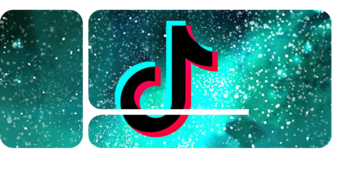Industry Groove – Week 29

“It’s likely that TikTok Music will launch in many more markets over the next few months” I wrote last week in my newsletter. Now, it happened even faster than expected. After initially launching only in Indonesia and Brazil, where it was essentially just a name change, the service has now launched in three new territories: Mexico, Singapore, and with Australia being the first so-called “Western country” on the list. It is highly likely that this is just the beginning, with the service expected to roll out in the most lucrative markets of Europe and the USA.
Also, last week I mentioned that the launch of TikTok Music most likely indicated that TikTok had reached agreements with the three major record labels. At least the agreement with Warner Music has now been made public. Considering that Sony Music has also uploaded its catalog back onto Resso/TikTok Music, it can be assumed that an agreement was reached or is imminent there as well. Finally, one might wonder whether TikTok Music would have launched without the approval of the most important major label, Universal Music. But does TikTok Music also share Universal’s vision of an artist-centric model? At the moment, it doesn’t seem so, as their ecosystem tends to contribute to an overflow of new music. The announcement about the deal with Warner states, at least: “Further, the deal will see the joint development of additional and alternative economic models.” What exactly this means remains intriguing!
The expansion of TikTok Music has begun
- As mentioned in the intro, TikTok Music is now available in Mexico, Singapore, and Australia. In all three countries, only a premium offering is available, and there won’t be an ad-supported free subscription option.
- The launch begins with a beta phase, and participants will receive the service free for three months. The prices after that are roughly comparable to the competition, so TikTok Music is not trying to undercut them.
- TikTok is currently silent about further expansion plans. However, they do announce that there will be news about this in the next few months. It will be interesting to see which markets they target next.
- Additionally, TikTok and Warner Music have revealed that they have extended their deal, calling it an expansion of their existing agreement.
- The deal covers both Warner Music and its publishing arm, Warner Chappell. On ByteDance’s side, the deal encompasses TikTok, TikTok Music, CapCut, and TikTok’s “Commercial Music Library.”
- As expected, no specific details have been made public. Therefore, it’s not known whether Warner will now receive a percentage of TikTok’s advertising revenue.
Spotify for Artists: Additional listener insights added
- Spotify has been rightfully criticized regularly for sharing only a fraction of the vast amount of information they collect about listeners with artists.
- Therefore, Spotify for Artists is updated from time to time, gradually providing artists and their teams with a bit more information. Just like now, with the new “Segments” tab.
- This tab shows you how many listeners you have reached in the last two years and divides them into three groups: Active Audience, Previously Active Audience, and Programmed Audience.
- The Active Audience includes all listeners who have consciously listened to your music in the last 28 days, for example, through your artist profile, the album, or their own library or playlists. They further divide this segment into Superfans, Moderate listeners, and Occasional listeners.
- Previously Active Audience: These are all listeners who were once part of the Active Audience but haven’t consciously streamed any of your songs in the last 28 days. However, it’s possible that they consumed your music through programmed sources.
- Programmed Audience: These are the listeners who have only heard your music through programmed sources such as editorial playlists, algorithmically generated playlists, or the radio function. This category includes all those who have played at least one of your tracks in the last two years.
- I may be repeating myself, but it shouldn’t go unnoticed that it is now essential to provide artists with a way to directly engage with their Superfans or reactivate the “Previously Active Audience.”
Vinyl boom continues, other formats also growing
- In my newsletter last week, I already reported on Luminate’s midyear report and the positive developments. Now, I’d like to shed some light on additional figures, specifically regarding different music formats.
- Although there were moments when it seemed like the growth in vinyl sales might cool down, it actually increased by 21.7% in the USA compared to the previous year. This means that vinyl experienced a stronger percentage growth than streaming.
- It is also remarkable that, apart from downloads, all formats were able to achieve growth, including CDs, which grew by a respectable 3.8%.
- This growth can be attributed to K-Pop artists, who occupied all Top-10 spots in CD sales, with the exception of Taylor Swift. Ms. Swift was also the one who sold by far the most vinyl albums (Midnights sold 251,000 copies, Folklore 107,000).
- In total, 41.6 million physical albums were sold in the US during the first half of the year, which represents a 13.3% increase compared to the same period in 2022. Among these sales, 23.6 million were vinyl albums, 17 million were CDs, and there were still 212,000 tapes sold.
English-language music listening decline
- All those old enough and raised in a non-English-speaking country can still remember a time when predominantly US and UK acts dominated the charts, radio airwaves, and festival stages.
- However, this dominance of the English language is steadily declining, as the latest figures from the Luminate Report demonstrate.
- Overall, there’s a trend indicating that the music industry is more global than ever before. However, when zooming in on individual markets, a localization trend becomes apparent.
- Of all the songs consumed worldwide in 2022, only 62.1% were in the English language. The previous year, it was 67.1%. In the first half of 2023, this number dropped even further to 56.4%.
- Even in the USA, the percentage of English-language music is decreasing, though it still stands at a proud 88.3%.
- I will certainly keep a close eye on this trend because if it continues, the share of English-language music could soon drop below 50%.
Bonus Reads
- Water & Music provides a good overview of how DSPs work and how artists are paid with their latest paper. There’s little new information, but it serves as a helpful recap and offers some food for thought.
- Pre-saves are a well-known tool to generate buzz before a release and stimulate algorithms on the release day. YouTube Music has now partnered with Linkfire to also offer pre-saves. As usual, the release will appear in the in users’ libraries on the release date, and data will be shared with the artists’ team. However, unlike Spotify or Apple Music, this feature is tied to a single platform – Linkfire.
- Apple Music has launched a feature that allows listeners to add artists to their favorites. Once they do, they will receive notifications when you release new music. Additionally, they will have access to your content under “Listen Now” and receive improved music recommendations based on your content. On Apple Music for Artists, you can find templates to promote your profile on social media and encourage fans to mark it as a favorite.
- Eamonn Forde argues that the importance and reach of DSPs (or platforms in general) should not be measured solely based on their Monthly Active User (MAU) metric. There are no clear guidelines for measuring this metric, and therefore each platform interprets it in a way that suits them best. He has a point here.











